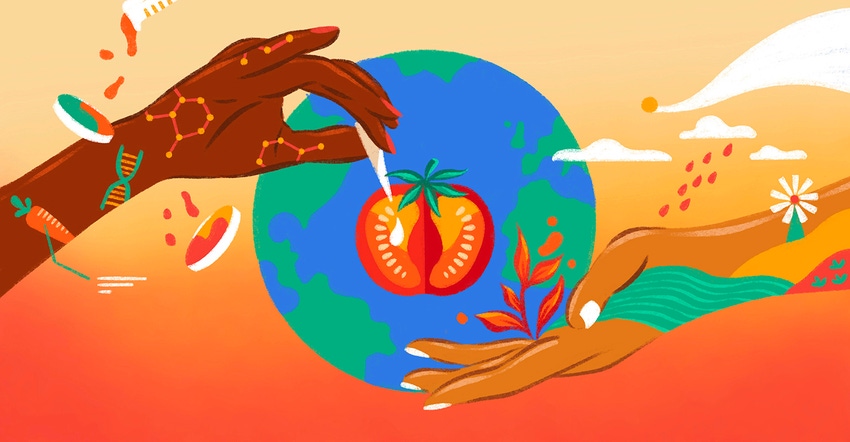Scientists, policymakers, waste management experts and stakeholders must resolve today's conflicts to put environmental impact first.

New Hope Network encourages its community members to share open and transparent dialogue about issues that are impacting the food industry and its future. Please help us keep this conversation going. If you’re interested in sharing your opinions on the future of food, email Jessica Rubino at [email protected]. All opinions are welcome.
As a materials scientist with over 25 years of industrial experience, I know first hand the critical role that materials science plays in the future of our food system. Unfortunately, packaging is often overlooked in this discussion, despite being an essential component of food safety and preservation.
Flexible packaging, especially plastic, has been part of the mainstream since the 1950s because it is inexpensive and requires only small amounts to develop effective materials. However, improper disposal of plastic packaging can have a significant negative environmental impact, so its usefulness can quickly be outweighed by its downstream consequences. How, then, can we generate solutions for flexible packaging's problems, without compromising on its benefits?
Balancing safety with sustainability
The answer lies in finding multiple materials that ensure we can safely preserve and store food products, but then be recycled. It's easier said than done, in part because of the popularity of using plastic packaging for food safety: It can extend products' shelf lives and provide appropriate sealing for fresh fruit and vegetables to reduce spoilage. Films and wraps can prevent moisture loss and reduce cross-contamination.

Another element of complexity is that developing packaging materials with lower constituent amounts of plastic affects the economics of traditional recycling, where volume and purity of plastic are important.
For example, the everyday milk bottle is made entirely of HDPE (high density polyethylene) and can be efficiently recycled using traditional methods. However, a plastic film like the type used for microwaveable, ready-to-eat rice pouches is made of a blend of PE, biaxially oriented polypropylene (BOPP), nylon and other materials, which is much more difficult to recycle due to the varying properties of each component. The different materials may not melt at the same temperature, and they may require different processing methods, leading to a decrease in the purity of the recycled material.
As a result, materials scientists and packaging designers face a delicate balancing act in creating packaging that is food safe, durable, affordable and recyclable. We have to consider the environmental impact of the materials we use, as well as how feasible it is to recycle them. And it's not just us—we need collaborative efforts from policymakers, industry stakeholders and waste management experts to find solutions that balance the needs of all parties.
Nuance is key for effective solutions
So, what is the solution?
As ever, there's no silver bullet, but one option we're exploring is compostable materials, which offer a much more sustainable prospect. But we need time to develop them.
To do so, we need a careful roadmap for the integration of these materials into the consumer market that allows the infrastructure to scale, but doesn't disrupt the current growth of the commercial composting infrastructure. It's a systems problem that requires a systems approach.
Many will also point to the advanced recycling approach. Also known as chemical recycling, this process decomposes plastic into basic chemical building blocks using heat and pressure. These building blocks can then be used to create new plastic products, similar to how virgin plastic is made. This is a nearer-term solution because it uses existing plastics and can rely on some of the existing collection and sorting infrastructure. Of course, this is a step in the right direction, but doesn't fully address the difficulties associated with recycling packaging that is highly contaminated with food, or very small format packaging, where composting could be a better alternative. Indeed, any alternative would also take time to scale and we must consider the environmental impact of the processes. We need a nuanced approach that addresses all these finer complexities.
A multi-pronged approach for change
Ultimately, developing more sustainable packaging solutions requires a fundamental shift in our thinking. From the development of new food packaging materials that decompose naturally in composting systems, to more renewably sourced, bio-based food packaging solutions, there is a whole host of packaging opportunities that need to be explored.
But this is about more than just the materials themselves. We need to interrogate the systems that support them, from composting infrastructure to consumer education. We must develop a roadmap for technology and implementation that will help drive demand and innovation in the compostable packaging space; provide true demonstration cases that prove the feasibility of the approach; and enable the responsible development of infrastructure. It's time for us to act on all these fronts and collaborate to develop truly sustainable solutions.
Eric Klingenberg is the materials science lead for the Mars Advanced Research Institute. His current projects include research and development into sustainable bio-based compostable packaging.
About the Author(s)
You May Also Like




